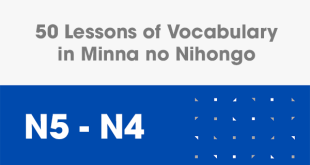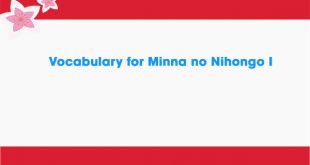Minna No Nihongo Lesson 34 Grammar
1. The noun の / The verb + と お り に, The verb
Noun の + とおりに, verbs
Usage: Indicates a certain action is performed in accordance with the content indicated in the noun
For example:
せんのとおりに、きってください
Cut this way
せつめいしょのとおりに、くみたてました
I installed it according to the manual
Verb form / verb form た (1) + と お り に, Verb (2)
Usage: Make verb (verb 2) something as you see, hear, learn, etc. (verb 1)
* Verb 1 is in the original form if the movement it indicates is going to be done in the present tense, but if it is in the past it must use the form
For example:
わたしがやるとおりに、やってください
Just do follow what I do
わたしがいうとおりに、かいてください
Please write down what I said
みたとおりに、かいてください
Write down what you saw
2. The noun の / the verb form た +, the verb 2
Meaning: After
Usage: describe the fact that is expressed in verb 2 after the fact has been expressed in verb 1 or noun 1 has been completed
For example:
あたらしいのをかったあとで、なくしたとけいがみつかりました
After buying a new watch, I found a lost watch
しごとのあとで、のみにいきませんか
After finishing work, will you drink with me?
* Compared with the sentence pattern [てから], this sentence pattern shows a more chronological sequence
3. The verb form て / the verb form (ない) な い で + Verb 2
Usage: describe movements or states associated with verbs 2
For example:
しょうゆを つけて たべます
We dip in soy sauce and eat
しょうゆを つけないで たべます
We eat without soy sauce
4. The verb form (ない) ないで, the verb 2
Usage: In the case of two things that cannot be done at the same time, someone must choose to work in the verb form 2 without the verb 1
For example:
にちようびはどこもいかないで、うちでゆっくりやすみます
I didn’t go anywhere on Sundays, I just stayed home to rest.
Related Post: Minna No Nihongo Lesson 34 Vocabulary
 Learn Japanese Free Learn Japanese Free
Learn Japanese Free Learn Japanese Free







